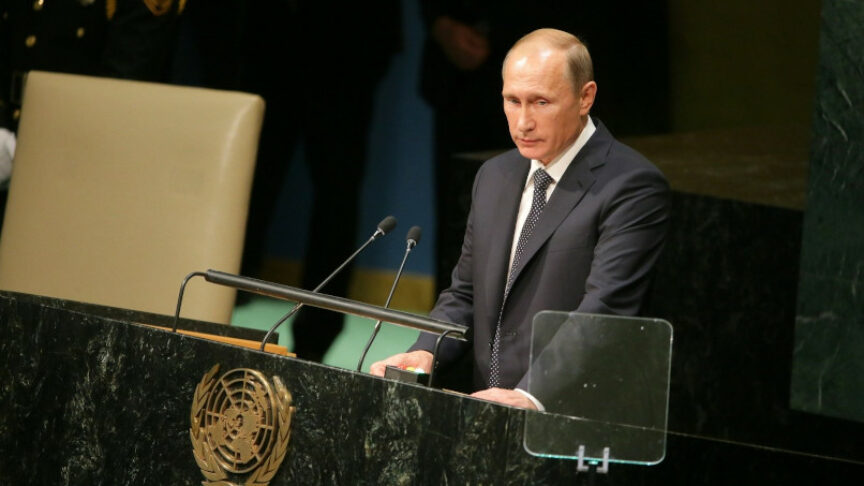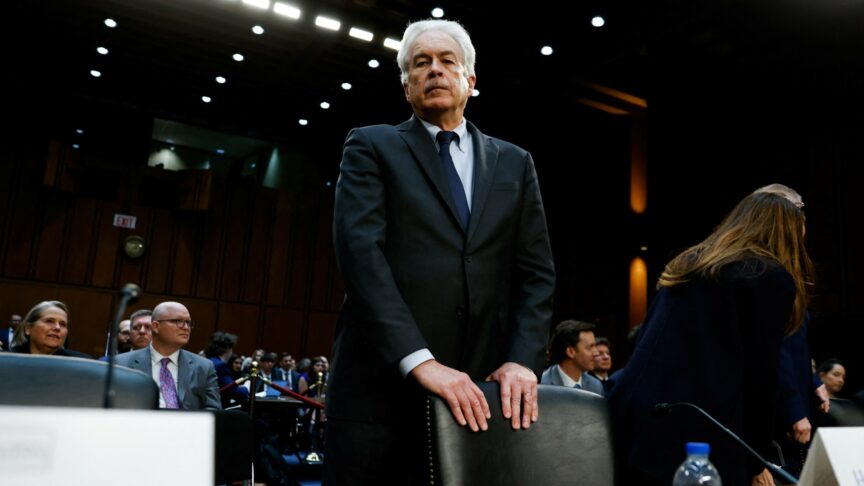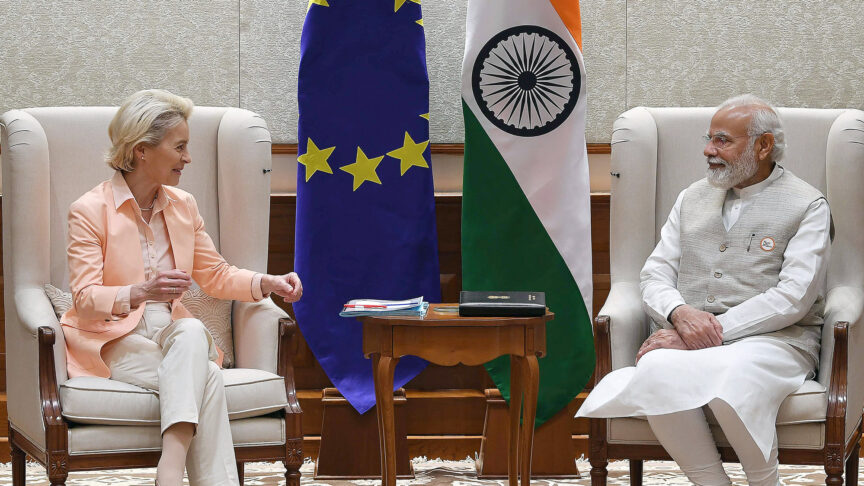Why a new Yalta wouldn’t end the malaise between the West and Russia
The political moment might seem propitious for a new Yalta, but such a system is likely to create more problems than it solves.
As the world searches for a cure for covid-19, several states are on a parallel quest to end the malaise between the West and Russia. US President Donald Trump’s recent decision to invite his Russian counterpart to a G7 meeting, and French attempts to re-engage with Russia, are part of this quest. Even if the G7 summit won’t to take place in the next few weeks, the initiative might still result in a separate US-Russia summit – perhaps around the UN General Assembly in September.
The last time Russian President Vladimir Putin attended the UN General Assembly, in 2015, “Yalta” was on his mind. At the time, he forcefully praised the Yalta system for helping “humankind pass through turbulent, and at times dramatic, events of the last seven decades. It saved the world from large-scale upheavals.” In his view, since the world today is turbulent and often shaken by dramatic events, a dose of old-school, tried-and-tested geopolitical medicine would make it stable once again. This medicine is a return to spheres of influence, sprinkled with some non-aligned, or neutral, buffer states here and there. The Yalta Russian decision-makers refer to is the international system agreed upon at a summit between Joseph Stalin, Franklin Roosevelt, and Winston Churchill in the last months of the second world war – at which they more or less agreed to divide Europe into spheres of influence.
The “new Yalta” elixir could follow a strong or a weak recipe. The strong version of this medicine is an implicit recognition of a Russian sphere of influence in some post-Soviet countries. The weaker version is a form of non-alignment or neutrality in several post-Soviet states, primarily Ukraine. As with medicine, this system has different names in different countries. Off the record, Russian officials describe it as a “new Yalta”. But such a term is unacceptable in polite European society. So, the vaguer phrase “a new European security architecture” is sometimes (but not always) used as an alternative. The key geopolitical ingredient of such an elixir is the same – an acceptance, perhaps implicit, of spheres of influence in Europe as the price for better relations with Russia.
On the surface, talk of a new Yalta appears to come at a propitious moment. The European Union and NATO have little appetite for further enlargement, especially outside the Balkans. Trump reportedly said that he does not care about Ukraine (albeit it in somewhat less polite terms). As readers of the Asterix and Obelix cartoons know, an elixir is only as powerful as the druids who concoct it. If Trump wins a new presidential term, he will find in Putin the right partner at the geopolitical cauldron.
Even if the prospect of a new Yalta does not pose an immediate threat, debates on European security, the terms of future re-engagement with Russia, and the need for a more geopolitical Europe reveal misguided assumptions about how the “old Yalta’ worked. Such assumptions are apparent in not just in Russia but also the United States and the EU.
The old Yalta system wasn’t just based on a stable mutual agreement to accept the division of the world into spheres of influence. It was fundamentally competitive.
The Russian leader’s depictions of Yalta as a time of ordered, neat, and (mostly) responsible great power interactions is an illusion. The old Yalta wasn’t neat or ordered. It was bloody, messy, and dangerous. The Soviets were only able to turn the 1945 Yalta agreement into a reality through almost a decade of Stalinist brutality and the expenditure of vast resources. The imposition of full Soviet control over tiny Lithuania took nine years and caused around 30,000 deaths. In western Ukraine, the Soviet counter-insurgency campaign ran for several years and cost 45,000 lives. The death rate per capita in both western Ukraine and Lithuania was so high as to make modern-day Syria and Iraq look relatively stable by comparison. While this was happening – as during the Soviets’ military interventions in Hungary (1956) and Czechoslovakia (1968), and imposition of military rule in Poland (1981) – the West was unified in inaction to a degree that it is unlikely to be in the future.
Those moments in European history are a reminder that geopolitical agreements don’t come into being by themselves. They also require enforcement. Small states aren’t likely to accept geopolitical stitch-ups simply because big powers have signed some papers. As such, any new Yalta would be impossible to enforce. Russia lacks the power and resources to do so. And the West wouldn’t stand idly by as it made the attempt.
The weaker recipe for a new Yalta is to recognise Russia’s droit de regard over countries it already dominates, such as Belarus and Armenia, while persuading or forcing other states – primarily Ukraine, Georgia, and Moldova – to accept non-alignment or internationally recognised neutrality (Austria-style). Even if big powers could initially implement it, this version of a new Yalta would be unlikely to form a solid basis for a new European security architecture. On the contrary – it would be ephemeral. Whereas many in the West portray Ukraine’s or Moldova’s non-alignment as the end goal, and as a good foundation for a strong and stable relationship with Russia, Moscow views such non-alignment only as a step towards greater influence over its neighbours.
While Western capitals have shown plenty of restraint in their attitudes towards NATO and EU enlargement, Moscow would not resist the urge to expand the Russian-led Eurasian Economic Union or the Collective Security Treaty Organisation. And, even if one considers a chain of non-aligned buffer states between Russia and NATO to be a good recipe for European stability, it is unclear why the West should prescribe this to Ukraine and Moldova, but not Belarus and Armenia, which are Russian allies.
The cold war and the old Yalta system show that non-alignment was not neat either. Non-aligned states such as Yugoslavia and Egypt – and even ones partially aligned with the Soviets, such as Albania and Romania – all struggled to maintain their status. They came under economic pressure from the Soviet Union, as well as attempts at internal subversion through intra-party coups. The West provided Yugoslavia and Egypt with not only substantial economic assistance but also military and security aid designed to support their non-alignment. Such non-alignment almost never occurred by itself. Instead, it was often painstakingly crafted through Western support in the form of money, weapons, and security partnerships. This is because the old Yalta system wasn’t just based on a stable mutual agreement to accept the division of the world into spheres of influence. It was fundamentally competitive, as great powers tried to weaken each other’s alliance systems and co-opt new partners.
Old medicine is usually discarded because its side-effects are too costly. The same goes for the various reincarnations of Yalta systems. If one is to extract a single lesson from the cold war and the Yalta system, it concerns the need to cultivate partners and allies well beyond NATO and the Warsaw Pact. Having a network of economic, security, and defence partnerships with not just formal allies but also non-aligned states was a useful way to avoid losing the cold war. Participants in future G7 meetings might not deal with this lesson as part of the formal summit agenda, but they would be wise to keep it in mind while reflecting on the future of the European security architecture.
The European Council on Foreign Relations does not take collective positions. ECFR publications only represent the views of their individual authors.



